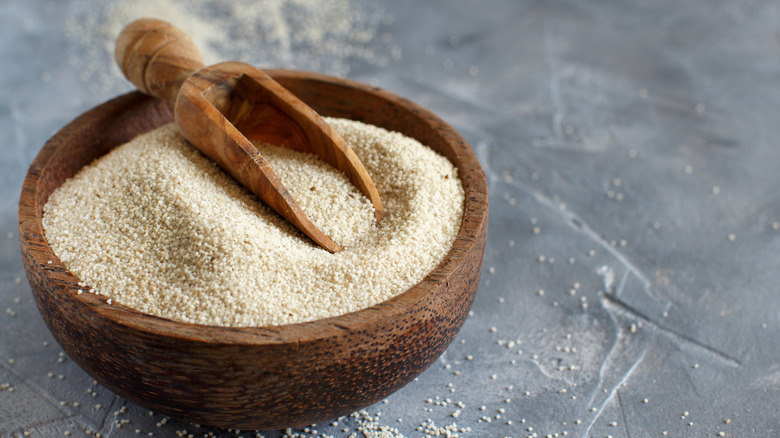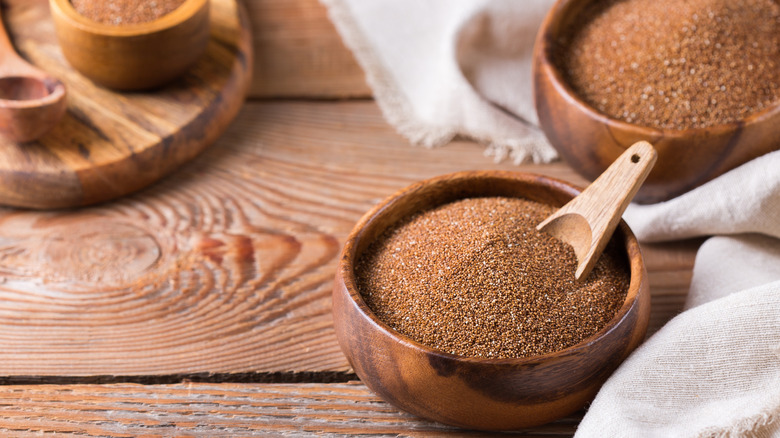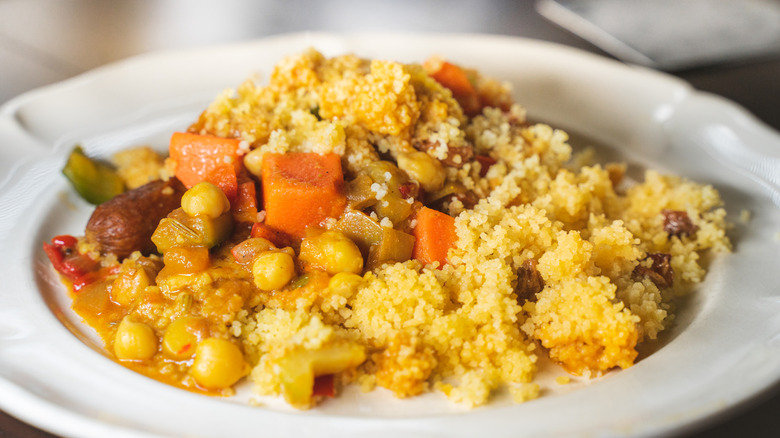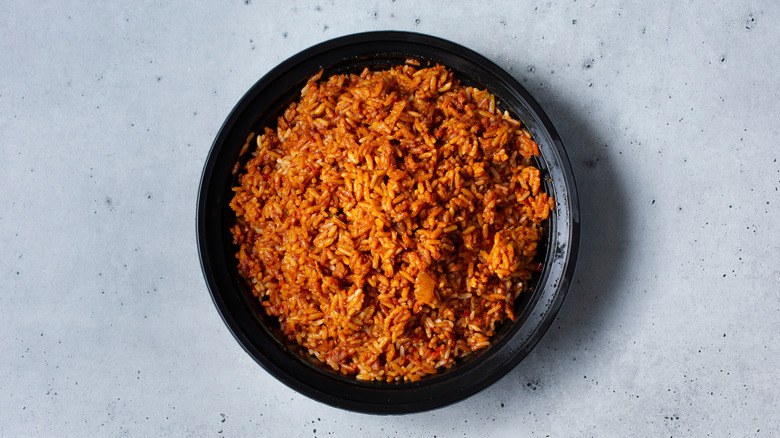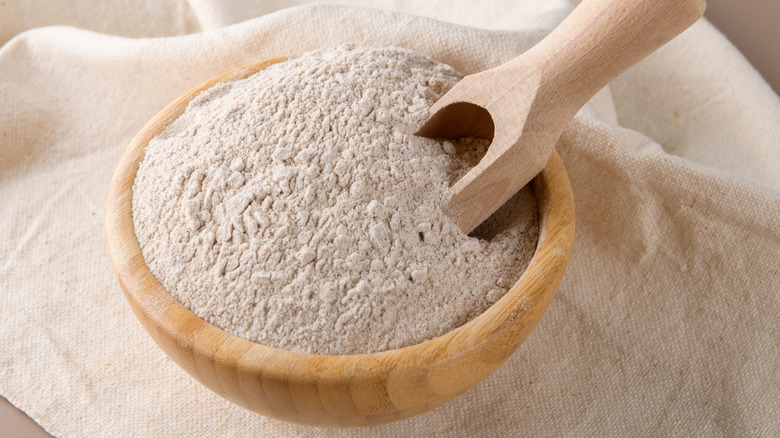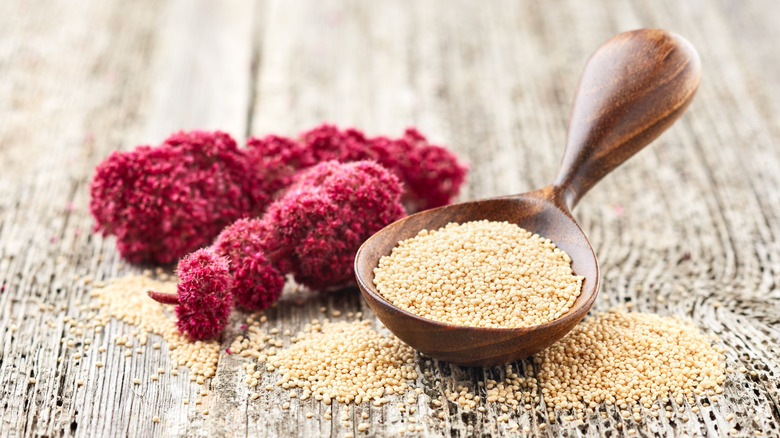10 African Grains You Should Be Using
Although the South American grain, quinoa, has made a dramatic resurgence, it's difficult for many Americans to get out of their plain grain rut. While we love rice, wheat, cornmeal, and oats, the earth has much more to offer. Expanding your go-to ingredients can curate inspiration, especially for those with gluten intolerances who are sick of brown rice flour. Africa is chock full of unique grains rich in vitamins, minerals, fiber, and protein. Even more importantly, they are quite delicious and offer a variety of textures.
As an anthropology major with a focus on African studies and food culture, I have tried my fair share of African grains and it's no surprise they have become staples in my household. After getting my Plant-Based Nutrition Certification from Cornell and working for some time as a plant-based chef and recipe designer, I discovered a great appreciation for variety, especially cross-culturally. Grabbing ingredients and recipes from other cultures is a wonderful way to further your culinary skills, and ensure that you don't get stuck in a five-meal rotation. Smell and taste bring us pleasure, so why deprive ourselves of the expansive variety that our world has to offer? Start your culinary expedition with these 10 African grains you should be using.
Try not to feed into the carbohydrate fear. Whole carbs are a great source of energy for your body and keep your gut microbiome healthy. Use grains to stuff your vegetables, soak up sauces, and create mouthwatering baked goods. Each grain has a unique texture and flavor.
Fonio
Let's go way back in time to Africa's first cultivated cereal grain, the ultimate ancient grain, fonio. Like many ancient grains, fonio is a triple threat. It's used for sustenance, medicinal purposes, and has a ceremonial and ritual significance. It was first cultivated in West Africa, and remains a staple grain in that region to this day, although it is enjoyed throughout the continent. Traditionally, fonio was set aside for chiefs, those in positions of power, or served during special occasions. Postpartum women use the grain to clot blood and to promote milk production. Luckily, the crop is easy to grow and fairs well in extreme conditions, making it a reliable cash crop and local staple today.
Although it's special to West Africa, the grain is exported and can be found all over the world. Look for it in specialty stores, African markets, or even at your local grocery store with Bob's Red Mill products. The fast-growing grain reads much like cornmeal, as its texture is coarse. It also resembles crystallized brown sugar in its raw form and it can be eaten as a hot cereal when cooked, used in baking, cooked up as a side, or even added to pancakes. In fact, my favorite use of fonio is to add texture to pancakes. Simply add about ¼ a cup to your pancake batter and enjoy. I find it couples especially nicely with chickpea flour pancakes, for the ultimate gluten-free brunch recipe. If you're new to the African grain scene, start with fonio, the West African grain you should be paying attention to.
Teff
Perhaps one of the more popular grains of Africa, teff may be a name that you recognize. This grain is native to Ethiopia and surrounding countries and is packed with nutrients. It's used to make the fermented Ethiopian flatbread, injera, which is loaded with sauces and stews to make beyaynetu, which is a must for those who enjoy variety. However, teff, the gluten-free grain is capable of much more. I enjoy it best toasted, cooked in water with honey, nuts, and dates until it's spongy and soft, then splashed with plant-based milk. It has a rather strong flavor that is nutty, and toasting the seeds prior to boiling them brings out the intensity. It can also be ground into fine flour and used in baking. Its ability to grow in harsh conditions makes it a reliable staple crop for those in the Horn of Africa.
Although teff has many redeeming qualities, one of the most desirable is its nutrient density. Besides its 10% protein content, teff is also loaded with fiber, iron, magnesium, and calcium. It can be used ground in just about any recipe that calls for flour. This means teff can be made into muffins, cakes, breads, pizza crusts, or even pasta. However, unground it can be used as a grain alongside stews and stir-fries. Unlike oatmeal, it doesn't become starchy the longer it's cooked. Instead, the individual seeds remain separate but become tender. Because teff is a nutritious gluten-free grain, it has gained popularity in the West, especially amongst those with celiac disease. This African grain should be on everyone's radar as it provides variety, and can add flavor to your everyday meals.
Finger millet
Many varieties of millet have origins in both Africa and Asia. Around the world, millet is used for both animal feed and human consumption. Finger millet is an African variety of millet that is husk-less, which can make the processing less complex, as the husk does not need to be removed. Identified by its rust-red seed coat, finger millet is a fantastic option in the whole-grain department, even amongst other varieties of millets. After the seed coat is removed, the grain can be cooked, ground, or processed. It's rich in protein, iron, and calcium, and is loaded with antioxidants which can reduce disease-causing inflammation.
While finger millet originated in East Africa, it's also popular in Southern India where it has been domesticated. Millets are naturally gluten-free, making them a powerful choice for those with celiac disease, and a nutrient-dense option for all. Finger millet has an oaty, nutty, and hay-like flavor common in whole grains, and pairs beautifully with gamey meats and robust vegetables. Its texture is similar to cooked white quinoa, which makes it an incredible choice coupled with stews or saucy dishes, which are popular all around the continent. This starchy grain helps to balance intense flavors and heat, and absorb excess sauce so no drippings go to waste. If you can't find finger millet at your local grocery store, search for it at an African or Indian market, or purchase it online. It can be used as a breakfast cereal, a side dish, or even as stuffing. It's a heaty powerhouse grain that will fill you up and keep you full. Winter, spring, summer, or fall, now is the perfect opportunity to cook with more millet.
White African sorghum
Sorghum, from the grass family, is an ancient grain that is popular in Africa and Asia and used for livestock feed. It's naturally gluten-free and is loaded with nutrients, making it a top-tier choice of grain for your next meal. White African sorghum was discovered in South Africa but has been cultivated around the world, including the United States, where much sorghum still comes from. It was also a staple of ancient Egypt, so its historical reach from toe to tip of the continent is vast. Although its name would suggest that it's white, the white seeds are covered in black glume making them appear black.
The seeds can be cooked and eaten like quinoa or couscous, but the grain can also be ground into flour and used as a wheat alternative in baking. Consider a few things before swapping sorghum for wheat flour, like adding a starchy binding agent, and increasing the amount of oil called for to prevent it from drying out. The grain can also maintain a coarser grind and be enjoyed like grits or polenta. Like any grain, White African sorghum can make for an incredible hot cereal simply by cooking and adding dates, nuts, seeds, and a milk or non-dairy milk of your choosing. Honey or maple syrup can help to sweeten the grain, but you may find the natural sugars in the sorghum and fruit do the job. Sorghum has a sweetness to it, similar to corn, and can be used to make syrup as a sweetener, which is one of the many reasons it's been popularly cultivated.
Ethiopian oats
Ethiopian oats, also known as Avena abyssinica or ajja, is an oat variety historically consumed and cultivated in Ethiopia. Kniche is also referred to as "Ethiopian oats" but is a cracked wheat breakfast cereal dish that does not actually use oats, but reads like steel cut oats when cooked. Genfo is yet another Ethiopian porridge that uses wheat. Avena abyssinica is from the Poaceae or Gramineae family and grows well in dry, heavy soils in Northern Africa. Ethiopian oats are less brittle than classic oats that we are used to.
Breakfast porridges in Ethiopia are often made with berbere seasoning, which is a salty, spicy, savory, and sweet combination that excites the tongue with its variety and balance. Although we do have savory oats in the United States, it's much less common to include savory spices in our breakfast cereals. Consider grabbing some Ethiopian oats or even kniche, cook and spice it up, and serve it hot for breakfast. Alternatively, treat both like you might steel cut oats, adding cream and maple syrup before enjoying. Oatmeal fans, it's time to break free from your Quaker Oats tradition and try something new.
Couscous
Couscous dishes typically conjure up images of Mediterranean cuisine like tabbouleh, but as it turns out, it is Moroccan at heart. Couscous is granulated durum wheat, with a texture similar to white quinoa, however slightly chewier and less seedy. Because of this, it's not technically a grain. It did make our list of African grains because it reads like a grain and is also used like a grain. Its neutral flavor resembling pasta allows it to be a wonderful vehicle for sauces and flavor, serving a similar purpose to many starches of African cuisine. Couscous can also be the star of the show, spiced up and layered with vegetables and sauces. Try a simple Moroccan couscous recipe to start.
When purchasing couscous you'll notice that there are different varieties. Three in particular may be available most frequently at grocery stores and are most commonly sold around the world. Those are Moroccan, Lebanese, and Israeli couscous. The three come in different sizes, ranging from slightly larger than semolina, to pea-sized. The Moroccan variety is native to Africa and is the smallest of the three. Use it like you would polenta or grits, and serve it under vegetable or meat stews. It's a wonderful stray from rice and tends to cold the flavor of the sauce more deeply. The best part? Almost any grocery store in the United States carries couscous, as it's commonly consumed all over the world. No special orders are needed here!
Oryza glaberrima or African rice
African rice has been cultivated for centuries, far before Europeans arrived on the continent. It is still used today for both ritualistic and culinary purposes. However, Asian rice, the world's other cultivated rice, is most popularly used around the world. It's been suggested that Oryza glaberrima was first cultivated in Mali, later spreading to the rest of the continent and beyond, including the Americas.
Oryza glaberrima is identified by its brick-red coloring, making it quite distinct in the rice world. Red rice is a whole grain, so it takes a bit longer to cook than white rice, and has a chewier texture. Be sure to read up on the best method for cooking red rice before hopping in. African rice has a stronger nuttier flavor, but is more difficult to get your hands on as the ancient grain is on the decline.
A great application for African rice is to make Nigerian jollof rice. Jollof rice is loaded with spices, tomatoes, and other umami-rich ingredients. The recipe varies across the continent, but long-grain African rice provides the best texture and flavor. If you can get your hands on a bag of Oryza glaberrima then feel free to use it as a breakfast grain, a vehicle to soak up a stew or meat drippings, or in any other application in which you might use Asian rice. I particularly recommend it as a cereal or paired with gamey meats as the strong nutty flavor and chewy texture work well in both applications.
Bambara groundnut
Walking the line between legume and grain, the Bambara groundnut can be used in a myriad of capacities. While it can be used as a bean, as it is similar to a chickpea with a slightly nuttier flavor, it can also be ground and used as flour. Just like garbanzo flour, Bambara groundnut flour is used in place of wheat flour and can be used to make anything from waffles to bread. Try it in combination with other flours to help increase the nutrient density of the dish, as it is high in both protein and fiber. The grain legume is rather beautiful, coming in a variety of colors.
Although you may have never heard of it, the Bambara groundnut is Africa's third most popular cultivated legume, most of which takes place in Nigeria. It's flavorful, drought-resistant, and nutritious, yet not high on the list for exports. Once you begin to use the flavorful grain legume in your baking, you'll wonder why its popularity hasn't exploded. Grain legumes are famous for being naturally binding, meaning you won't need to add starches and eggs to the naturally gluten-free flour. In fact, Bambara groundnut flour makes incredible pancakes, but just be sure to cook them all the way through because the flour can be rather bitter when raw.
Pearl millet
Originating in West Africa, pearl millet is one of the most important staple grains. In fact, it's the sixth most important grain in the world. After domestication almost 4,000 years ago, pearl millet's popularity spread across the Sahel region of Africa and beyond. Unfortunately, maize is easier to process and is attached to some government incentives, so pearl millet has taken a back seat to the corn variety, despite having a higher nutritional value. Amongst the types of millet, pearl millet is the most widely grown.
Pearl millet also goes by sajja and bajra, and has a more bitter aftertaste than other varieties of millets. The grains themselves have a pointy corn-like appearance and are grey, white, and yellow in color. Pearl millet can be cooked up as is, which makes it exceptionally chewy. Alternatively, it can be ground into flour like most grains. Porridge is one of the most popular dishes made with pearl millet, referred to as pap. Be sure to load it up with spices, and your favorite dried fruits and sweeteners.
Spinosus and Thunbergia amaranth
Gardeners know that pesky weeds can cause doom in your garden, but there are a few weeds that you might consider letting take over. Amaranth is one of those plants, as it produces delicious seeds that are naturally gluten-free. They can be cooked in seed form, or ground up to make a flavorful flour for baking and cooking. Even the leaves of this plant are edible. The spinosus and Thunbergia varieties of amaranth are African and are especially popular in the Southern region of the continent.
Although the two seeds are often compared, quinoa and amaranth have quite a few differences. Amaranth is quinoa's sweeter, nuttier, bolder cousin. So, if you enjoy quinoa, you have to try amaranth. Instead of simply acting as a vehicle for flavor, it brings the flavor. It's also extremely healthy, as it's loaded with protein, fiber, and iron. Like many whole grains and seeds, it promotes cardiovascular health, digestive health, and reduces disease-causing inflammation in the body. You can buy amaranth in most stores, but you may have to order the spinosus and Thunbergia varieties online, as the South American species are more popular in the United States.

